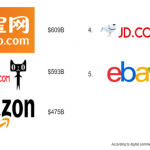A marketplace is a platform where vendors can come together to sell their products or services to a curated customer base. The role of a marketplace owner is to bring together the right vendors and the right customers to drive sales through an exceptional multi-vendor platform – sellers have a place to gain visibility and sell their products. The marketplace owner earns a commission from each sale.
Marketplace owners do not own the inventory their platform sells, unlike online store owners. In some cases, marketplaces could invest in their fulfilment and other costs not associated with their core matchmaking business model to increase customer experience and satisfaction. For example, Amazon’s distribution and fulfilment centres.
Some key characteristics are:
- Interaction between supply and demand.
- No inventory.
- Focus on customer satisfaction.
- Lean and scalable operations.
Mind-blowing facts regarding marketplaces
50 of the 100 top marketplaces launched in 2011 or later. These include retailers that have been around for a while and recently began allowing other merchants to sell on their sites. More than half have been launched in the last 7 years.
The top online marketplaces in the world sold $2.67 trillion worth of products in 2020. Sales on marketplace sites, like those operated by Alibaba, Amazon, eBay and others, accounted for 62% of global web sales in 2020, according to Digital Commerce 360’s analysis.
Although the top three marketplaces—Taobao, Tmall and Amazon—account for nearly two-thirds of the $2.67 trillion in GMV of the Top 100, several other marketplaces worldwide grew almost 100% last year—including Etsy in the U.S. and Ozon in Russia. Collectively, these marketplaces grew 29%—faster than the 24% growth of global eCommerce.
Ranked marketplaces by Gross Merchandise Value

Types of business models in marketplace
B2B: wholesale suppliers sell their products or services to commercial buyers.
- Revenue models: commission, subscription, listing fee, and visibility upsell.
- Example: Alibaba, Global Sources, IndiaMART.
B2C: businesses sell their products and services not to other companies but directly to customers.
- Revenue models: commission, subscription, listing fee, and visibility upsell.
- Examples: Amazon, Deliveroo.
C2C or P2P: connects individuals with similar needs, tastes, and incomes to share products and services.
- Revenue model: commission, paid promotions, advertisement, listing fee, and visibility upsell.
- Example: Uber, eBay.
Important Metrics to know in marketplace

Marketplace financial metrics and assumptions

IMPORTANT: On GMV
Gross Market Value is generally not considered revenue as the filings of all these marketplace companies show. Marketplaces recognize transaction fees as revenues. Taking payment and dividing it by the Gross Market Value will give you the Take Rate percentage, which is its metric that shows how much value is being extracted.
Marketplace companies raising capital can make sure they avoid any potential misunderstandings with investors by using transaction fees as revenue and showing Gross Market Value separately. It’s important to know that most investment firms with revenue size requirements will use the fee revenue metric to standardize size versus other opportunities.
This article was written by José Ramírez Terc, specialist in 21st century business models.
About ONEtoONE
Our company, ONEtoONE Corporate Finance, is specialized in international middle-market M&A advisory. We are continuously focusing on improving the techniques to achieve the best possible price for our clients, and we also advise on acquisitions, strategic planning and valuation. We are pleased to give our opinion about company valuation or other aspects of a possible corporate operation. If you need an advisor while buying or selling a company,
contact us.






